Dr. Bob – Part Two (Akron-Style AA)

From his last drink in June, 1935, AA became the centerpiece of Dr. Bob’s life… (He) worked with Sister Ignatia… to treat thousands of alcoholics, who were then channeled into AA. He provided all of these services without charge.
(Slaying The Dragon, William L. White, p. 186)
By bob k
Before getting sober, Bob had been active with the Oxford Group. “They told me that I should go to meetings and I did, every week. They said I should affiliate myself with some church, and we did that. And they also said that I should cultivate the habit of prayer, and I did that – at least to quite a considerable extent for me. But I got tight every night. And I mean that. It wasn’t every once in a while.” (Detroit Talk, 1948)
Bill Wilson’s instruction to attempt to be helpful to others is what turned the trick.
Two Women Smackers
”During the summer of 1935, both cofounders worked tirelessly to maintain their own sobriety while trying to help others.” (Dr. Bob and Bill W. Speak, Michael Fitzpatrick, pp. 62-63) Even before the trip to the AMA convention “…they found a young guy by the name of Eddie R. He had just been thrown out in the street… with his cute little blond wife and two kids. So they decided to move the whole shebang into our home. They locked Eddie upstairs in the bedroom”. (Bob Smith Jr. Talk, Kerrville, Texas, 1986)
Eddie got out a few times, by sliding down the downspouts, once making it all the way to Cleveland, where he was going to commit suicide. “When he sobered up he had a few things that hadn’t shown up immediately. And he began beating up on his little blonde wife; and he began chasing my mother around the house with a butcher knife.” (Bob Jr., Texas) Eventually, Eddie was recommitted to a mental Institution.
The first success was with Bill Dotson. “He was a lawyer, who had been in the hospital six times in the preceding four months. He went completely out of his mind when drinking, and he had just roughed up a couple of nurses… ‘He’s a grand chap when he’s sober’.” (Dr. Bob and the Good Oldtimers, p. 82) Bill D.’s sobriety date was June 26, 1935.
By the time Bill returned to New York, they also had added Ernie G. (The Seven Month Slip), and had some other strong prospects.
The Prince of Twelfth-Steppers
“Lois described Dr. Bob as being full of humanity. ‘He definitely wanted to help people in trouble. And he was so excited and enthusiastic about this new thing he and Bill had… Bill realized, too, that he got things from Bob that he needed to complement his work. He always consulted with Bob… (who) usually went along with Bill’.” (Oldtimers, p. 91)
“Beginning in 1935, Dr. Bob quickly became an extraordinarily effective worker with active alcoholics. He was tough. He was inflexible. He told his prospects: ‘Do you want to surrender to God? Take it or leave it.’…The doctor was authoritative, and he was impressive.” (Getting Better, Nan Robertson, p. 61) There had been a lesson learned from the failure with Eddie R. “The men he sobered up… asked themselves about any new alcoholic prospect: ‘Does he want to stop badly enough? Is he mentally sound apart from his alcoholism?’” (Robertson, p. 62)
Women were not welcome. The young were not welcome.
What existed at the time was very much a “Christian fellowship”. Quiet time, prayer and bible reading were integral parts of the healing process. “Dr. Bob continued his efforts with alcoholics in Akron in close connection with the Oxford Group.” (Not-God, Ernest Kurtz, p. 53) Jim Burwell would not have survived the Akron vetting.
AA Number 12
Interviews with Bob E., who got sober in February 1937, provide much of the information about what was happening in Akron during the early years. He was hospitalized, but “clear-headed enough to begin to wonder about this ‘new therapy,’ for over the next five days it seemed to consist simply of being visited by groups of two or three men. ‘None of them said anything about what I had to do – they just introduced themselves and started to tell me their experiences’”. (Not-God, p. 54)
On the fifth day, his friend Paul returned to indoctrinate him in the “spiritual side”. “‘The surrender was more than important; it was a must…’ they told you to get down on your knees and say a prayer to God… They demanded it. You couldn’t go to a meeting until you did it.’” (Oldtimers, p. 101) It is downplayed in the literature, but it’s quite clear that in the circumstances of the time, these were “surrenders to Christ”.
“‘I often wonder how many people that come in now would survive an experience like that – a regular old-fashioned prayer meeting,’ said Dorothy, who was then married to an AA member, Clarence S..” (Oldtimers, p. 101) Hospitalization was another “must” in the early days, to the point that when Warren C. came to AA in Cleveland, in July 1939, there was much debate about admitting him to the Fellowship, as he had not been hospitalized.
Change of Venue
“In the spring of 1939, administrators at the Akron City and Green Cross Hospitals, noting that Dr. Smith’s mysterious patients owed over five thousand dollars, began scrutinizing his admissions more carefully.” (Not-God, Ernest Kurtz, p. 79) He asked Sister Ignatia, the admissions officer of St. Thomas if he could smuggle in some alcoholic patients. Dr. Bob knew that the good sister was sympathetic to the cause. “’We often discussed the problem of alcoholism and the tragedies caused by excessive drinking,’ according to Sister Ignatia.” (Oldtimers, p. 185)
There is absolutely no denying the convincing evidence that throughout his fifteen years of sobriety, Dr. Bob labored in the service of his fellow alcoholic at a level virtually unparalleled.
Throughout the larger AA world, the more flamboyant Bill Wilson was the public face of the society, but in Ohio, the iconic figure was the curt, but devoted, medical man. The tarnishing of Bill W.’s star in the past few decades has led to an elevation of his cofounder’s legacy. As happens with other mythic figures, elements of the saga have been aggrandized, and even altered.
Free Medical Care
A total of “4,800 alcoholics were admitted into St. Thomas under his care”. (Oldtimers, p. 188) Before the first of the St. Thomas admissions, starting in August 1939, there had been many others treated in the previous four years at the two hospitals where Dr. Bob had his principal affiliations. What an enormous humanity this reflects! One would think that no aggrandizement is required.
But!!
One often hears that Dr. Bob “sponsored” 5,000 people. That’s a lot of sponsoring!! Better than one a day, granting Sundays off. Free medical care to 5,000 is admirable and astonishing. Enough in itself, one would think.
The Myth of Unification
Every political party’s leadership convention ends the same way. There is a final vote in which 100% of the delegates vote for the candidate who hours earlier was one of seven contenders, and perhaps the first choice of a mere 25%. The last vote, of course, is ceremonial, an act of “manufactured” unity. The disappointed 75%, supporters of the losing candidates participate in the unanimous ratification, but do they adopt every policy of the winner, policies against which they were struggling an hour earlier?
The great AA myth is that ALL of the original folks were delighted with the book, and that the book then ascended to a position of “authority,” for one and all. The truth is that compromises like “God, as we understood Him”, were disappointing to both the “radicals” and the “conservatives.” For those whose lives were so positively transformed with a decision for Christ, it’s hard to picture them telling prospects to “pick a God, any God”.
There is nothing in the history of Dr. Bob Smith, until possibly late in life, that indicates he had much regard for “as we understood Him”. For Bob, God was God. His side, those lobbying for a fully Christian book featuring a fully Christian God, had lost in the voting. But, did they change immediately the way they operated by adopting all of the book’s “middle ground” path? No, they did not. Not even close.
Akron-Style AA
There is a lot of whining today about the watering down of AA, and the past is glorified. Akron-style AA of the 1940s is the Holy Grail. (Cue Bruce Springsteen – “Glory Days”.) Many of those idealizing the AA of that era and locale, would be surprised at the pervasive Christianity. Although they had lost the battle for a fully and openly Christian book, it is clear that the Akron meetings changed very little, even after the split from the Oxford Group in the autumn of 1939.
Group autonomy existed even the early days when AA was present in only three cities. In the summer of 1939, Clarence S. reported on Cleveland AA, in a letter to Bill W. “Not too much emphasis on spiritual business at meetings. Have discussions after meetings of any business or questions arising. Plenty of fellowship all the time.” (Oldtimers, p. 167) Of the three locations, Cleveland seems to have made the most use of the Big Book.
Akron meetings were more solemn, with quiet time, prayer, and bible readings. The Oxforders’ 4 Absolutes and 5 “C’s” remained in high regard. Drunkalogs were discouraged. “Spirituality” lacked today’s diversity. Prospects absorbed, or adapted to what was offered or they moved on.
The Akron Manual
There were other problems with AA’s new book for the folks in Akron. In the 1930s the American economy was still not strong, and with many members and new prospects struggling, the Big Book was very expensive, about equivalent to a current price of sixty dollars. There was no lack of cynicism in Ohio about this “New York project”, and its commercial aspects.
Under the guidance of Dr. Bob, some Akron members, in 1940, assembled “A Manual for Alcoholics Anonymous”. Its Foreword explains, “This booklet is intended to be a practical guide for new members and sponsors… The booklet should be used in conjunction with the larger book, Alcoholics Anonymous, the Bible, the daily lesson… and other constructive literature”. This pamphlet became known as the Akron Manual, and very quickly went into wide usage in Ohio. It contained specific Dr. Bob prescriptions, and it had the enormous advantage of being obtainable for ten or fifteen cents.
Sponsor responsibilities are delineated. “You have in your hands the most valuable property in the world… the future of a fellow man. Treat his life as carefully as you would your own. You are literally responsible for his life.” (Manual, p. 5)
Helpful reading material is recommended. “You should make it a point to supply your patient with the proper literature… the big AA book, this pamphlet, a Bible….” (Manual, p. 6)
The sponsor essentially co-signed on the hospital fees, and set up a schedule of visits from other members. “It is desirable that the patient’s visitors be confined to members of Alcoholics Anonymous.” (Manual, p. 7) A quiet talk with the wife was suggested, explaining that family and friends were asked to stay away.
The prospect is also guided. “The Bible tells us to put first things first. Alcohol is obviously the first thing in your life. So concentrate on conquering that… There is the Bible you haven’t opened for years. Get acquainted with it. Read it with an open mind. You will find things that will amaze you.” (Manual, p. 11) Specific passages were recommended. Recruits were told that the AA book could become their “second bible”.
Newly sober members fresh from the hospital themselves were encouraged to visit those in the position they had themselves occupied only days before. “You feel that you have nothing to say to a new patient. Nonsense. You have been sober for a day, or a week. Obviously you must have done something to stay sober, even for that short length of time. That is your story… Definitely you have something to say.” (Manual, p. 12)
This directly contradicts all of the talk admonishing newer folks to “Sit down and shut up”, like it was done “in the old days”. The Akron Manual expresses the direct opposite of “Take the cotton from your ears and put it in your mouth” tough-talking approach.
A Salute to Human Power
“The harder you work at sobriety, the easier it is to remain sober.” (p. 12) This runs somewhat counter to the Big Book notion of turning it ALL over to God, as human power is of no avail whatever. Slogans such as One Day at a Time are often mocked by modern AA fundamentalists. They sometimes refer to the absolute futility of going to “the human power gym”.
And yet, the Akron Manual conveys a contradictory philosophy. “One of the easiest, most practical ways of keeping sober ever devised is the day by day plan – the 24-hour plan.” (p. 18) The fired-up modernists also will find more to displease them in an advocacy for prudent deliberation. “WHAT’S YOUR HURRY?… There is an old saying ‘Easy Does It.’ It is a motto any alcoholic could well ponder… Sobriety is a thing that you must do step by step. If anything puzzles you… forget about it the time being… Meanwhile, EASY DOES IT.” (p. 20)
There is even some outright “treatment center-style” advice. “Diet and rest play an important part in the rehabilitation of an alcoholic… We find it wise to eat balanced meals at regular hours, and get the proper amount of sleep.” (p. 21) Vitamins, fresh vegetables and fruits are recommended, as is getting a physical. Extra carbohydrates are advised to supply sugar. “When we deprive ourselves of alcohol our bodies cry for sugar. This often manifests itself in a form of nervousness.” (p. 22) Candy and sweets calm the nerves.
The Manual is very pro-meetings which “provide a means for an exchange of ideas, the renewing of fellowships… a sense of security, and an additional reminder that we are alcoholics and must be continually on the alert against temptation to slip backwards into the old drunken way of living. In large communities where there are several groups it is recommended that newer members attend as many meetings as possible… Remember that attendance at meetings is one of the most important requisites of remaining sober.” (p. 22)
The Akron Manual was “written and distributed by Dr. Bob’s Home Group, Akron AA group #1.” (barefootsworld.net) After listing the 12 Steps – “The Twelve Steps are more fully explained in another pamphlet… called ‘A Guide to the Twelve Steps of Alcoholics Anonymous,’ available at 12 cents a single copy.”
Tenth Step Promises
The Big Book of Alcoholics Anonymous promises an entire new state of being for the recovered alcoholic. “We will see that our new attitude towards liquor has been given us without any thought or effort on our part. It just comes. That is the miracle of it. We are not fighting it, neither are we avoiding temptation. We feel as though we had been placed in a position of neutrality – safe and protected. We have not even sworn off. Instead, the problem has been removed. It does not exist.” (BB, p. 85)
POOF!!!! Cue Cecil B. DeMille! The implication is quite obvious.
For the fundamentalist, this result is inevitable, for those diligently following the process. Here lies the “cake recipe” metaphor. Notwithstanding the normal irregularities found in all human endeavor, this “miracle” is viewed as absolute and unvarying.
Thus the problem that arises in attempting to explain why Bob Smith, one of the most godly and selfless of AA practitioners, did not get the promised results. Many will say that the good doctor did not get these tenth step promises until he was two and a half years sober. Doctor Bob’s Nightmare is the source of this “cited” information, but the text says something different. “Unlike most of our crowd, I did not get over my craving for liquor MUCH during the first two and a half years of abstinence.” (BB, p. 181)
From what has been written elsewhere, it is clear that he continued to struggle, albeit in a battle that was less intense and less constant. Speaking to Dan K. well into the 1940s, “‘Dr. Bob said that even then, it wasn’t Easy Does It for him. “In the morning, when I get up and put my feet on the floor… I have to battle all day to stay away from that drink.’” (Oldtimers, p. 282)
Mirroring his own experience, “Dr. Bob advocated that members stay in dry places whenever possible. ‘You don’t ask the Lord not to lead you into temptation, then turn around and walk right into it,’ he said.” (Oldtimers, p. 281)
Biographer Robert Thomsen had the best direct access to Bill Wilson, of all who have told AA’s story. “He had had to struggle… with his obsession always, and far more than Bill. There was never a two-day period, he told Bill once, when at some point he did not have a physical craving for booze. Still he’d gone on. He’d won… In his unpretentious way he’d fought his obsession.”
Life
AA’s Big Book states that “when all other measures failed, work with another alcoholic would save the day.” (BB, p. 15) Bob Smith worked tirelessly with other alcoholics. Such work was likely critical in his struggle to stay sober. He clearly also enjoyed it, and relished in the reclaimed lives of a great number of followers. The diligent efforts on behalf of alcoholics left him with an income far below the average medical professional.
Although gruff and reserved, he loved people. He was a giver of nicknames and a lover of slang. Dr. Bob very much enjoyed cards, especially bridge, and he was extremely competitive. He played to win.
In sobriety, he made efforts to be a better father, and a better husband to Anne. One wonders if the family members were ever resentful that even in their new life, Dr. Bob was less than an outstanding provider. Nonetheless, there was a warmth. Smitty in particular, spoke well of his father. Anne was deeply involved in the AA work herself.
Death
Dr. Bob was a tremendous supporter of Bill Wilson, and frequently sacrificed his own instincts in order to side with Bill. Bob remained opposed to Bill’s push for AA’s self-governance. When his spouse passed on June 1, 1949, Bob may have been confronted with his own mortality. In July of 1950, at the First International Convention, then in failing health, he made a brief speech.
Herein is a good portion:
It would be fitting to lay a little emphasis (on a few things); one is the simplicity of our Program. Let’s not louse it all up with Freudian complexes and things that are interesting to the scientific mind, but have very little to do with our actual AA work. Our 12 Steps, when simmered down to the last, resolve themselves into the words love and service. We understand what love is and we understand what service is. So let’s bear those two things in mind.
Let us also remember to guard that erring member – the tongue, and if we must use it, let’s use it with kindness and consideration and tolerance.
And one more thing; none of us would be here today if somebody hadn’t taken time to explain things to us, to give us a little pat on the back, to take us to a meeting or two, to have done numerous little kind and thoughtful acts in our behalf. So let us never get the degree of smug complacency so that we’re not willing to extend or attempt to, that help which has been so beneficial to us, to our less fortunate brothers. Thank you very much. (barefootsworld.net)
He survived only until November 16 of that year. Dr. Bob was 71 years of age and 15 1/2 years sober.

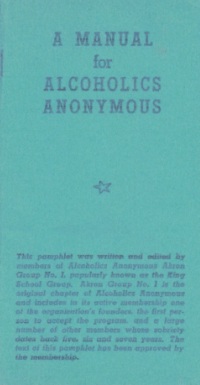

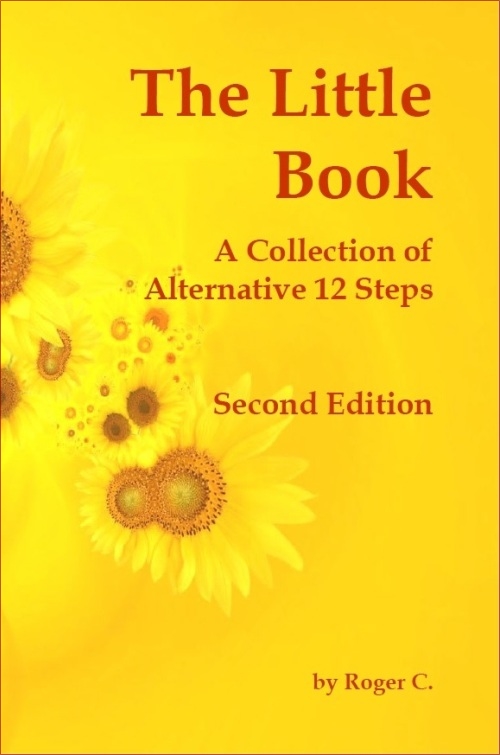

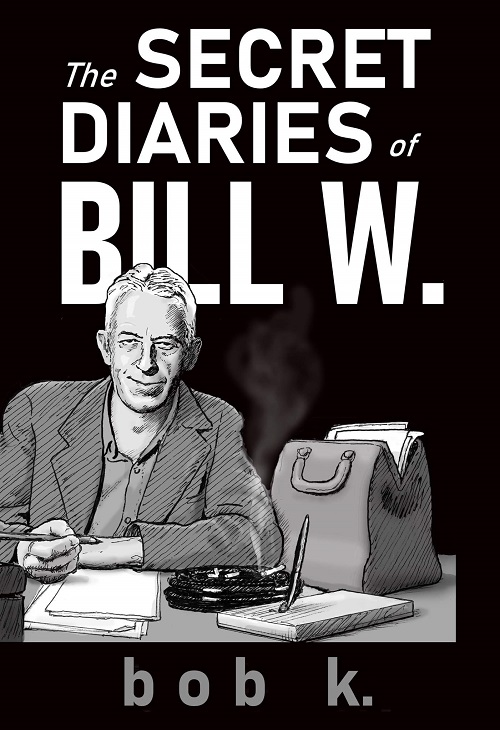
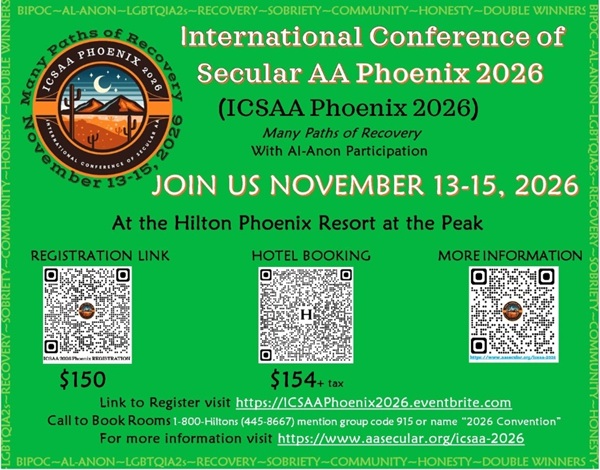

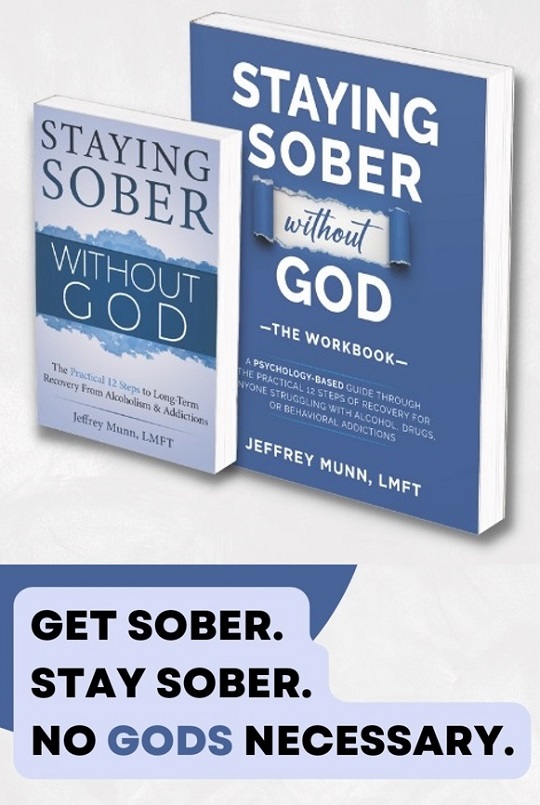
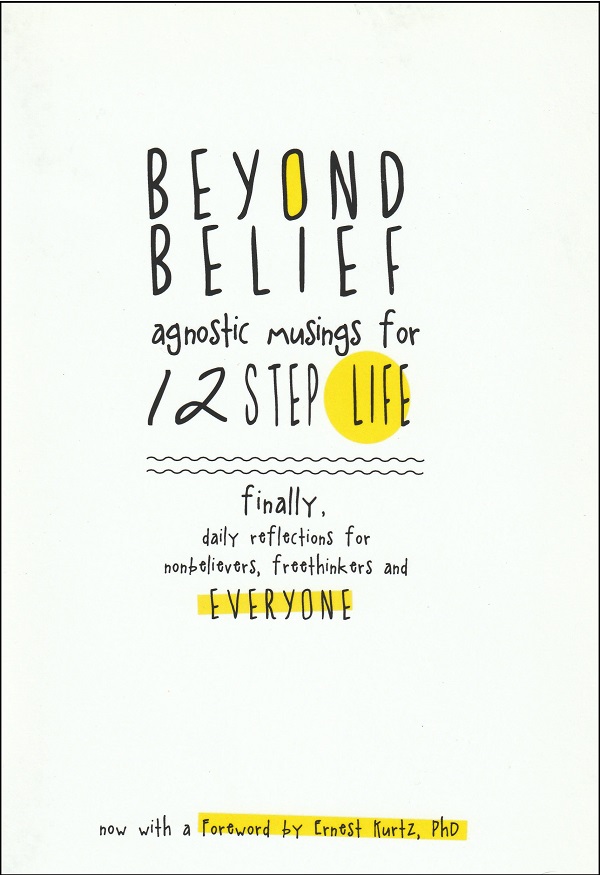

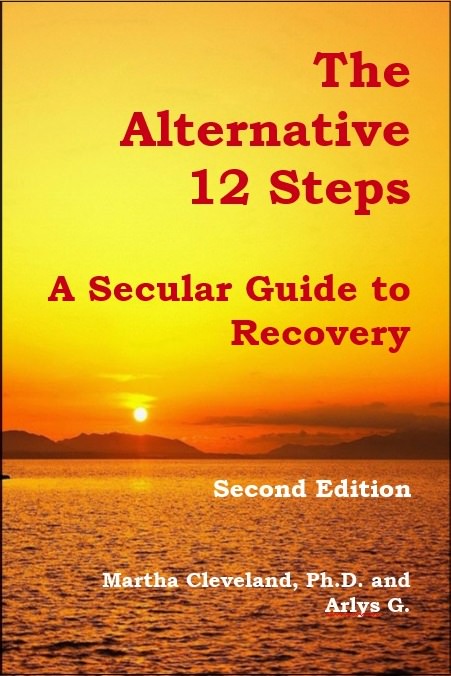




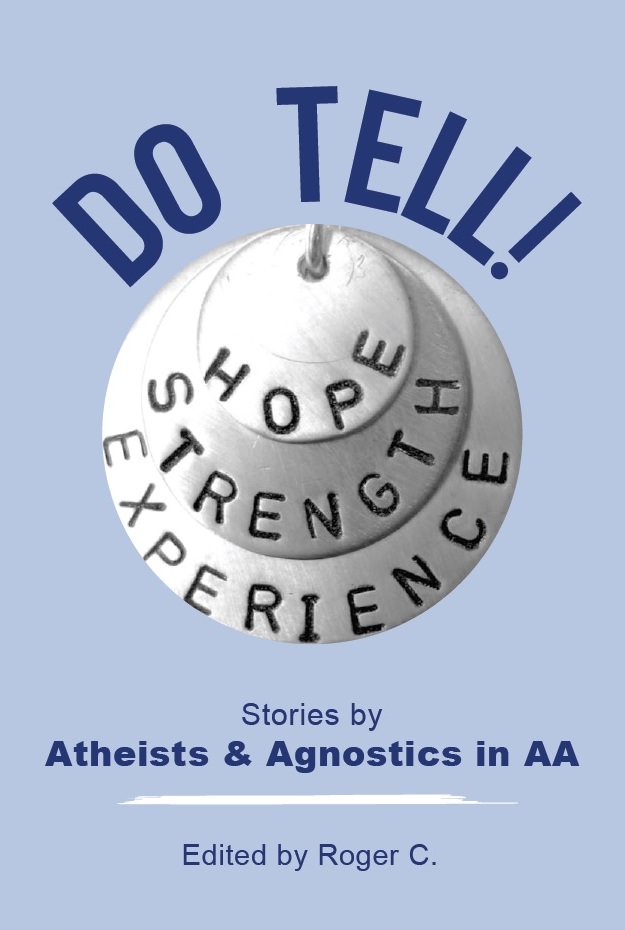






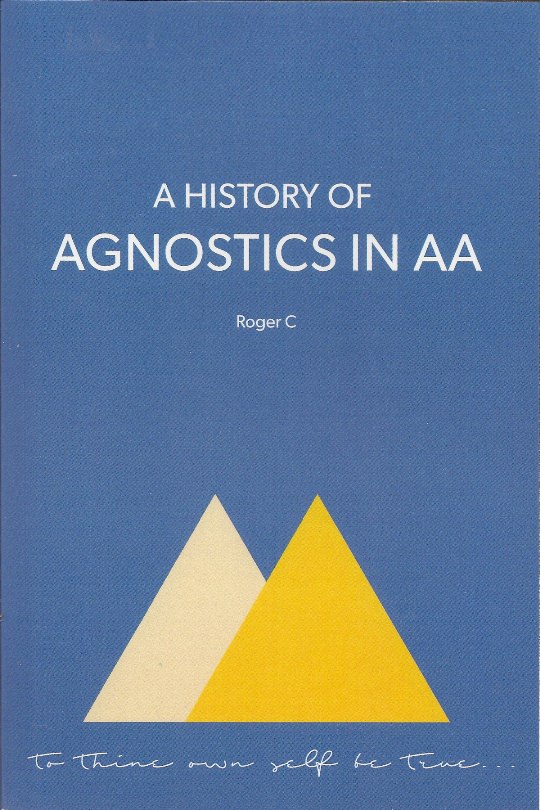
As always Bob, you have further informed me this morning!
I had known that ol’ Bob was a religious bigot. Now you’re telling me that, given his bamboozling of the hospital, he was also a cheat and a liar? I’m crushed.
Thanks so much for Part II, Bob. I returned to Part I to get a sense of the whole, and I see that I wrote the following as a comment to it:
Well, I don’t think I am any more fond of Dr. Bob after reading Part II, but that’s besides the point. We don’t have to like everyone in AA in order to appreciate the service they commit themselves to on behalf of the still suffering alcoholic.
In much the same way, the traditionalist in AA need not have any affection or fondness for those of us who identify as WAAFT, but they might want to be open to the fact that we can and do provide a service and empathetic environment for the still suffering alcoholic whose recovery is often put off by the religiosity of some groups and persons in AA.
Personally, I find the man to be a real mix. I am able to excuse some of the bad by recalling that he was raised in the 19th Century, by parents born before the American Civil War. His mother seems to have been a totally self-centered religious “whack job,” and his father acted with the austerity expected of a man of position.
His spouse was deeply religious, and after putting her through 35 years of his drunken escapades, some of his own religiosity stems from obligation to her, I suspect.
Regardless of his rigidity and other deficiencies, that he provided his own medical services to 5,000 people, without charge, represents a remarkable altruism. His “crimes” in smuggling drunks into hospitals are akin, I think, to the crimes of German citizens who hid Jews in their basements.
PLUS, he was a bridge player – 20 point bonus 😉
I found this post pretty inspiring. It proves to me how history of all human studies, may be the most empowering. The mind does like to forget, and then remember things that never happened.
Really well done.
Thanks for sharing it.
Hmm, Bob, thanks for this piece of history. I always read it with great interest. At the same time I am aware of how we make stuff like this in order to bolster arguments with “What did the founders say?” Well more so with Bill, who did say a lot of things in our favor along the way, Bob didn’t really, it seems.
But it seems to me that the bottom line of his work was love and service, though I wonder if there is any way we can divorce that from all the god stuff.
Clearly I am scheming here, just like the Back to Basics crowd: how can I simplify and abuse Dr Bob for my ends? lol. Well, maybe the only way out of that for me is to not look so much at the personalities in the the gallery, but just look more directly at what works without propping myself up with quotes. Only gets me in trouble. But join those who are trying to redefine recovery philosophy more from scratch. I watched a bunch of the Bill White ROSC talks yesterday, I think that is very productive, to look at what works and doesn’t work in recovery, and why.
Indeed, the bottom line is Coyhiss’s tree planting analogy.
Dr. Bob’s legacy has been twisted by the non-Christian fundies. In my area, there’s a lot of “God, God, God.” The God-loving spiritual folk LOVE Bob Smith, for whom “God was God.” In the glorification and idealization of “Akron-style” AA, it is missed that it was “Christ, Christ, Christ,” as well. There’s lots of “Bring your bible” “Read your bible” talk in the Akron Manual.
Of greater surprise were the exhortations towards very practical, human power measures as part of the solution. This of course is diametrically at variance with the principal fundamentalist conviction that’s what’s needed is a miracle.
Thank you, bob k for a good read. I’ve never really been a Dr. Bob person because of the religiosity and those “upper room” antics; I never would have joined AA under those conditions. OTOH, I do very much admire Dr. Bob’s pragmatism (which Bill sorely needed) and his tireless efforts in working with other alcoholics.
Thanks for the insights Bob.
His dedication to helping other drunks was outstanding but it is amazing that he never concluded that it was his helping others that kept him sober; not his religiosity. Then again, perhaps he did.
I don’t think I would have made the cut in Akron. I’m so happy that his way is no longer the only option on the table.
Somewhere on this site or a closely related one I’ve read of Bob’s daughter either writing a letter or swearing an affidavit that Bill took credit for much writing that Bob had done. I’m curious as to whether there is any evidence to back that allegation up. My dim recollection is that she felt royalties due Dr. Bob were going to Bill.
What was the story with the royalties on the ‘official’ AA literature in those early days? Now?
The Traditions seem to have been heavily influenced by the type of sobriety Bob practiced.
I think that the history is crystal clear that Dr. Bob had almost nothing to do with the writing of the book. He was granted a royalty in 1940 (after Hank P., who had returned to drinking was squeezed out), more in recognition of his leadership role in Ohio than for anything he may have contributed to the writing of the book.
Bill Wilson was the author of the book, including To Wives, The Family Afterward, probably To Employers, and possibly a good portion of The Doctor’s Opinion. The chapters were somewhat modified in response to input from some AA members, and a psychiatrist known as Dr. Howard. None was a co-writer.
Miss Windows’ complaints are that her father’s “royalties” ended at his death. Wilson’s did not, as his were REAL author’s royalties, rather than an appreciation of his more general contributions to the movement.
If someone was shafted, it was Hank P. A story for another day.
Bob, the original handwritten manuscript is available on line…easy to compare styles etc from that…and for some reason or another I was under the impression that “to employers” was completely written by someone else.
Thanks, Bob. I really do appreciate the work you put into this type of history. From the statements in the Alcoholics Anonymous book ie. if you don’t believe well we’re sorry for you etc as well as reading Dr. Bob and the Oldtimers, I have never been a Bob Smith fan. It may be that it was the softer AA in the traditional groups that kept me there until near 15 years of sobriety I found a WAAFT group. I still visit a traditional group and carry our message and try desperately not to frighten anyone as I don’t believe I would have survived Akron. It helped me that with a christian background, there were a number of jews in one of my groups, as I could see the christian stress not just turning me off, but turning off others of various religions or none which was true for many. I’ve ceased wondering why people like Bob Smith are religious as I have my own theories which satisfy me. I do, however, respect his work with alcoholics as there’s a big part of me that agrees with any method to sobriety from this hellish disease. It’s a tough one but not much gets accomplished when we polarize.
How about setting the book up for pre-orders on Amazon? Let us know as soon as it’s available.
I’m in for one copy or a dozen.
Excellent, Bob, as always – in a couple of weeks I’ll be treading some of the same territory you’ve discussed in this article about the Akron “A Manual for AA” in an article about Sponsorship in AA.
What I really appreciate is that you give such a balanced perspective, pointing out how religiously biased Dr. Bob was, while simultaneously pointing out how modern day devotees of him have misinterpreted at times his dedicated message of love and service, such as your section on “A salute to Human Power.”.
After reading this article, I became most appreciative about how despite their at times radical differences, nevertheless Bill and Dr. Bob were able to collaborate together to form and evolve AA through the Traditions and the basic outline of the structure for the General Service Conference organized in accordance with the Twelve Concepts.
Just this weekend I read this fascinating statement from June 10-11, 1945 in AA Timelines:
If only modern day devotees of Dr. Bob, Clarence Snyder, and Clarence I., the Back to Basics Folk, would be as dedicated to our code of “love and tolerance” as Dr. Bob was.
Regarding the royalties issue, at the end of the AA Timelines document cited above is a detailed accounting of who got how much when. The real winner monetarily was Lois and her estate, and I agree with your comment that Hank P. was the real loser — for his several year involvement with AA during which he was largely responsible for the publication of the Big Book, he got a measly $200.00 to reimburse him for the furniture that the AA Foundation office was using.
It’s always been my understanding that Hank P. wrote most of the “To Employers” Chapter as a sales pitch to sell the book to employers.
BTW, Bob, are you a member of the AA History Lovers Group? I just joined it yesterday . . .
I’ve been with AAHL for a few years – that’s where the big fish swim. I’ve even posted a few times, and they posted my entire Lois Wilson essay, which was scary.
The story of the Big Book is in my book, in a “Hank P.” piece, and another on the pursuit of Rockefeller gold. The BB story makes Dr. Bob look good for having a minimal involvement.
Did you write Clarence I. while meaning Clancy?
Bob, they posted your essay on Lois because it was well done.
There seems to be several of us here on that list. It’s a good list.
Thanks Bob — DOH, in my dotage, I often mix up names, etc . . . 😉 Yes, I meant Clancy I.
I look forward to connecting with you on AA History Lovers, as well as the reading your forthcoming book.
I can totally relate to the “dotage” thing, Ted.
Tommy H., you are a kind man. I very much appreciate all of your support.
Bob, I agree that Dr. Bob was a mixed bag. With him as gate keeper, I’d never have been admitted to the Oxford Group forerunner of A.A. I was too young (28) and, sick as I was, would not have gotten down on my knees to pray. I think that Dr. Bob’s vetting may have caused deaths of many alcoholics, who were turned away.
It’s good you discussed the Akron manual — but the one reproduced here is not the original manual, but a later version, from which important passages were cut. The important description of the 24-Hour Plan is missing. In the chapter in my book, “The 24-Hour Plan”, I cite the Akron manual as the first reference I could find to the 24-Hour Plan, although the concept of staying away from the First Drink goes back at least to the Washingtonians. Here are links to the full and original Akron Manual:
Manual (with description of the 24-Hour Plan):
http://www.barefootsworld.net/aamanual.html
Comparison between longer and shorter versions:
http://hindsfoot.org/akrman3.pdf
Note that the shorter version reproduced here has the statement: “Akron Group No. 1 has successfully operated for seven years with no officers.” However, the first meeting of an Alcoholics Anonymous group was in 1939, and Dr. Bob’s last drink was in 1935 — therefore, the shorter version of the manual, here reproduced, was published later than 1940.
I am interested in the anonymous and unsung heroes of AA, who developed the Traditions and slogans, and who wrote the Akron manual, which, with much good practical advice, is head and shoulders above the Big Book blather. Yes, Dr. Bob may have had some influence over the manual, but better minds than his did the thinking and writing.
The quotes, you’ll find, are from the 1940 version of the Akron Manual. The pictures accompanying the essay are a nice touch, but not my doing. There are no quotes from the later version. Don’t make too much are a picture of a pamphlet. There is a notation underneath saying it’s only a version of the pamphlet, right?
They say that if Dr Bob had been the sole founder everyone would need to go to Akron to get sober; if Bill W were sole founder, he’d have franchised the program. They needed each other. In politics they were both conservative Republicans but in AA Bill was a liberal and Bob a fundamentalist. Bob said the program was not open to “special interpretation” and that the Steps had to be “followed literally”. Bill wrote “every AA has the privilege of interpreting the program as he likes.” Room for us all.
Bill Wilson seemed to get increasingly liberal as he got older. It’s a shame that the book wasn’t written 5 or 10 years later. I think it would have been far better, although this pet theory is somewhat contradicted by the 12 + 12.
Dr. Bob’s Akron folks were not happy to lose the vote for a more Christian book. Akron-style AA continued to be a very homogenously Christian group well into the 40’s. Dr. Bob’s eventual softening to an acceptance of members with funkier higher powers came grudgingly, late in life, and at the urging of a freaken nun 😉
bob k
As a Northern Ohio resident and AA member, I can assure you that for most of the region around Akron, Christianity is still very much assumed practice in the rooms of AA meetings. The pamphlet referred to in the article is STILL printed and distributed. As far as I know, Akron intergroup does not recognize Agnostic AA groups (Cleveland does). “Akron style AA” is alive and well. To be fair, though, it probably reflects the views of most AA members around here, and I am fairly vocal about my atheism, and no one hassles me at all. So live and let live, I guess. Those constant and incessant prayer requests though… I guess I still kind of resent them.
BTW, Laurie, your latest essay on here was an absolute masterwork! Fabulous writing! It’s truly an art to present complex issues with such clarity. I salute you, sir!
Check it out folks.
Okay, folks. “Key Players in AA History” is for sale on Amazon.com!! In less than 48 hours of availability, it has rocketed up to about 155,000th place on the best-seller list.
May God bless each and every one of you atheists who buy the book. 😉